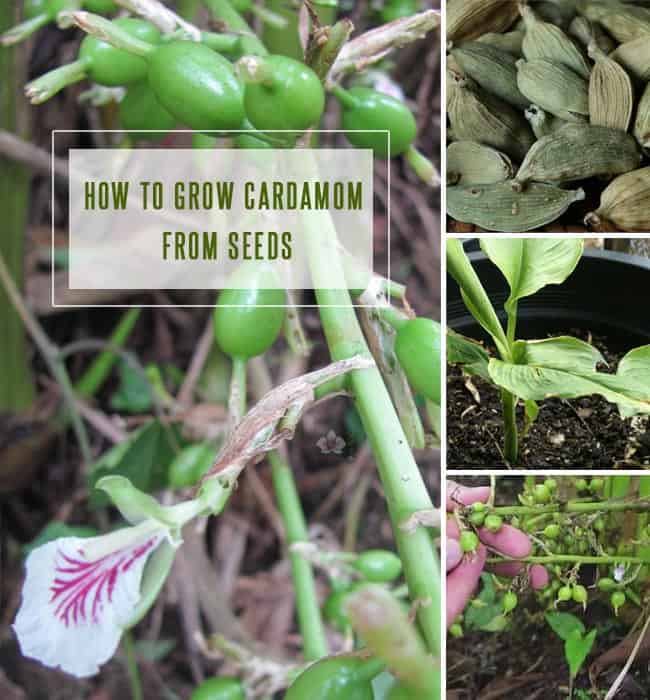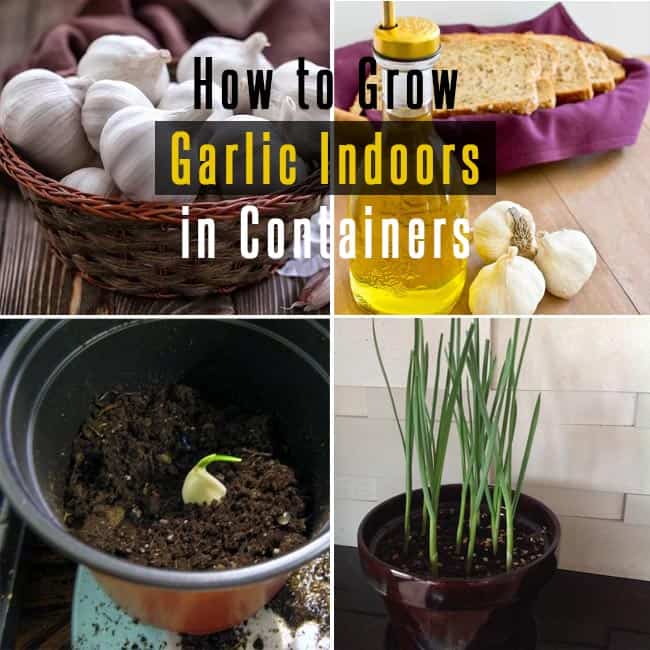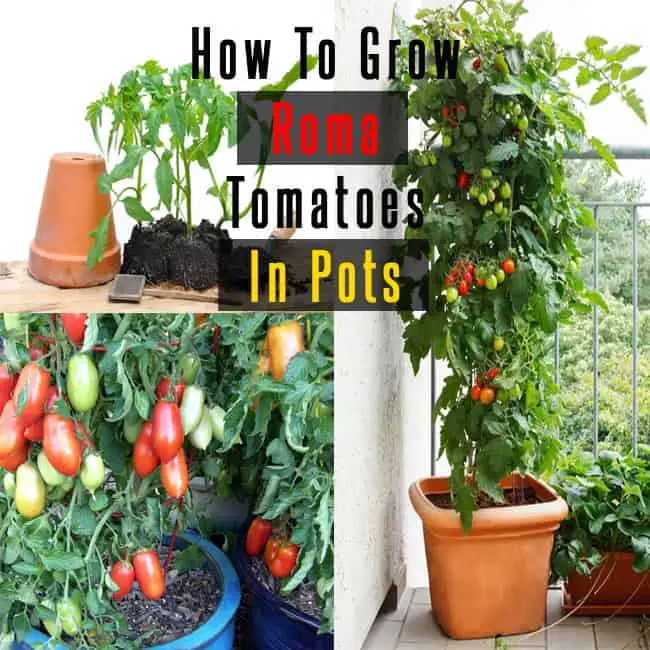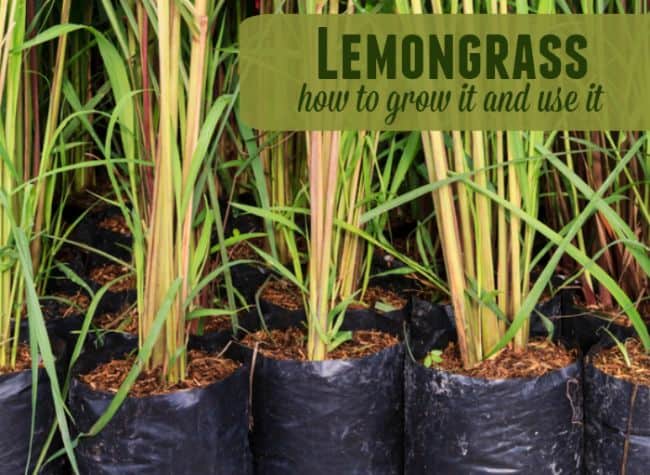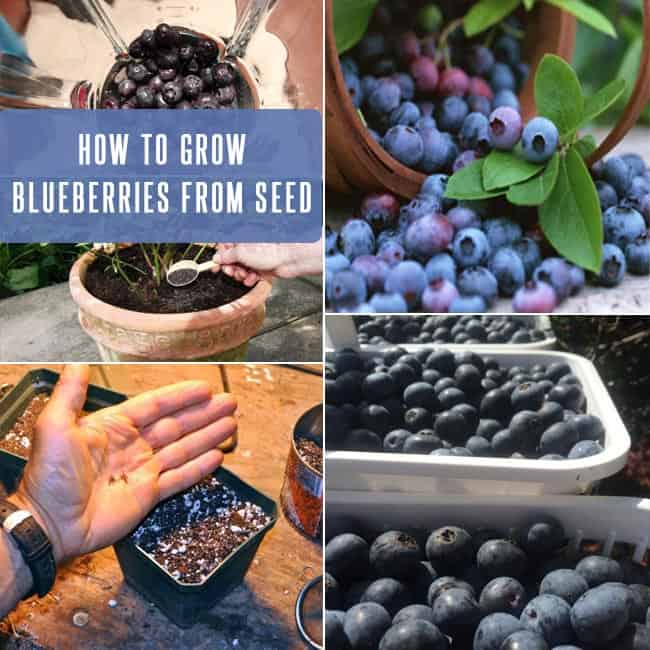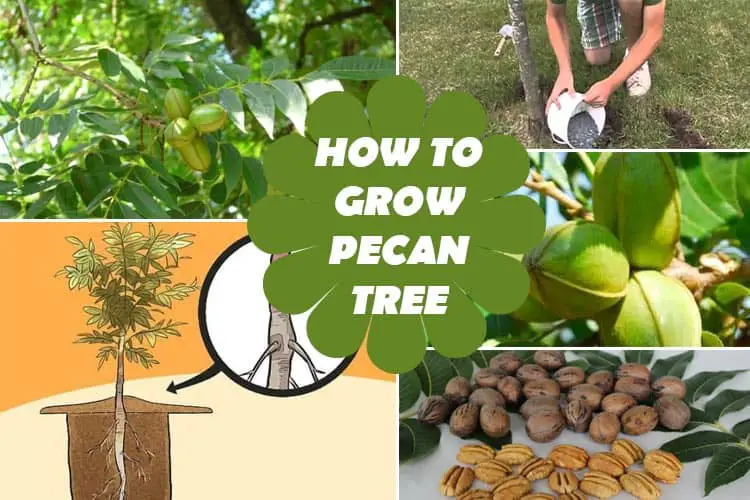11 Fall Garden Vegetables That Taste Better After First Frost
Winter’s first chill works magic on garden veggies, turning them into sweet treats that summer just can’t compete with. As the temperatures dip, those once-bitter Brussels sprouts transform into little caramelized gems, and rough kale becomes silky smooth.
These hardy greens thrive in the cold, developing rich flavors that make autumn harvests truly special.
Quick Summary
- Frost converts starches into natural sugars in root vegetables, creating sweeter and more tender flavors.
- Brussels sprouts develop sweet, nutty undertones after frost exposure, losing their bitter edge for enhanced taste.
- Kale transforms from bitter to sweet with tender leaves after cold weather, becoming rich in vitamins.
- Carrots, parsnips, and rutabaga all become significantly sweeter and more flavorful following frost conditions.
- Radishes varieties like Daikon and Black Spanish balance peppery heat with increased sweetness after frost.
Brussels Sprouts
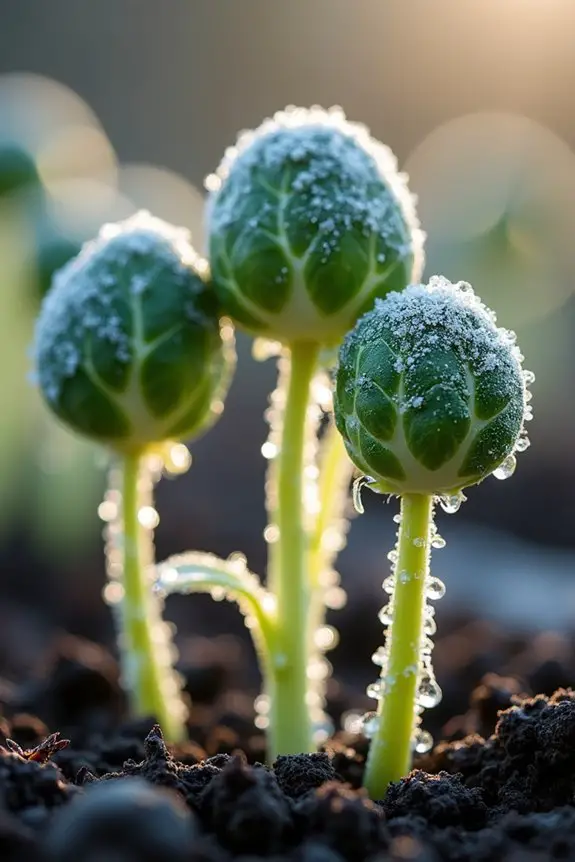
Every dedicated gardener dreams of harvesting plump, emerald Brussels sprouts that glisten like tiny jade cabbages in the crisp autumn air.
These miniature treasures transform dramatically after experiencing their first gentle frost, developing sweet, nutty undertones that replace any bitter edge. Cold temperatures trigger natural sugar production within each compact head, creating deeper, more complex flavors.
Proper Brussels sprouts preparation techniques include roasting with olive oil and sea salt to caramelize their outer leaves perfectly.
Smart Brussels sprouts flavor enhancement methods involve pairing them with bacon, garlic, or balsamic vinegar to complement their newfound sweetness beautifully.
Kale
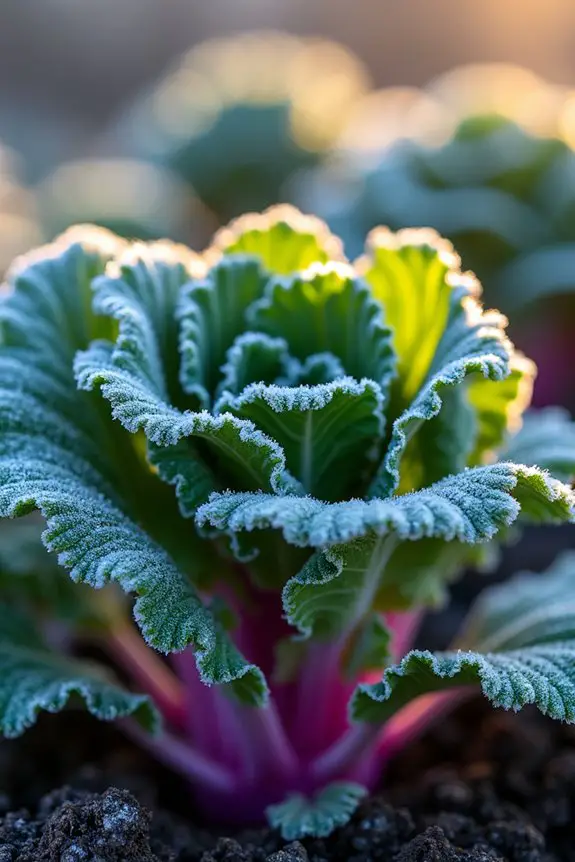
When autumn’s crisp winds begin to dance through garden beds, kale emerges as the undisputed champion of cold-weather greens. This leafy powerhouse transforms bitter compounds into sweet, tender leaves after frost kisses its dark emerald surface.
Kale health benefits multiply dramatically during cooler months, delivering concentrated vitamins A, C, and K.
Creative kale recipe ideas flourish with seasonal abundance:
- Massaged kale salads with warm roasted butternut squash
- Crispy baked kale chips seasoned with sea salt
- Hearty white bean and kale soup
- Sautéed kale with garlic and golden raisins
This nutritional treasure thrives in temperatures that send other vegetables into hibernation. For gardeners seeking low-water gardens, kale pairs beautifully with drought-tolerant plants like sedums and ornamental grasses that require minimal care throughout the season.
Carrots
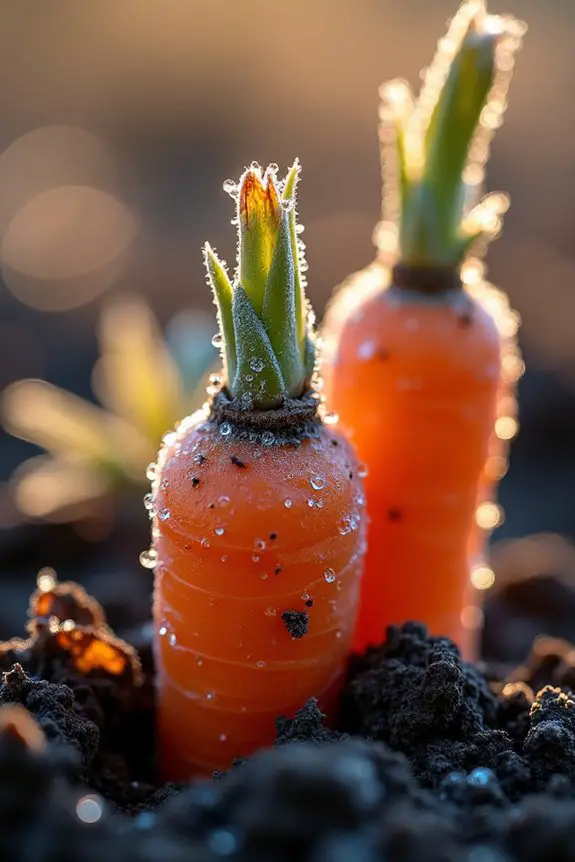
Beneath autumn’s golden blanket of fallen leaves, carrots quietly develop their signature sweetness as cooler temperatures work their underground enchantment. Frost transforms starches into natural sugars, creating tender roots bursting with vibrant orange warmth.
Popular carrot varieties like Nantes and Chantenay thrive in fall’s crisp embrace, growing plump and flavorful beneath the soil’s protective layer. These hardy vegetables reward patient gardeners with incredible sweetness that summer heat simply cannot produce.
Proper carrot storage in cool, moist conditions extends their garden-fresh taste through winter months, delivering sunshine-colored nutrition when fresh vegetables become precious seasonal treasures worth celebrating.
Like other cold-hardy crops such as cabbage and kale, carrots demonstrate remarkable resilience in cooler weather while maintaining their nutritional value throughout extended storage periods.
Parsnips
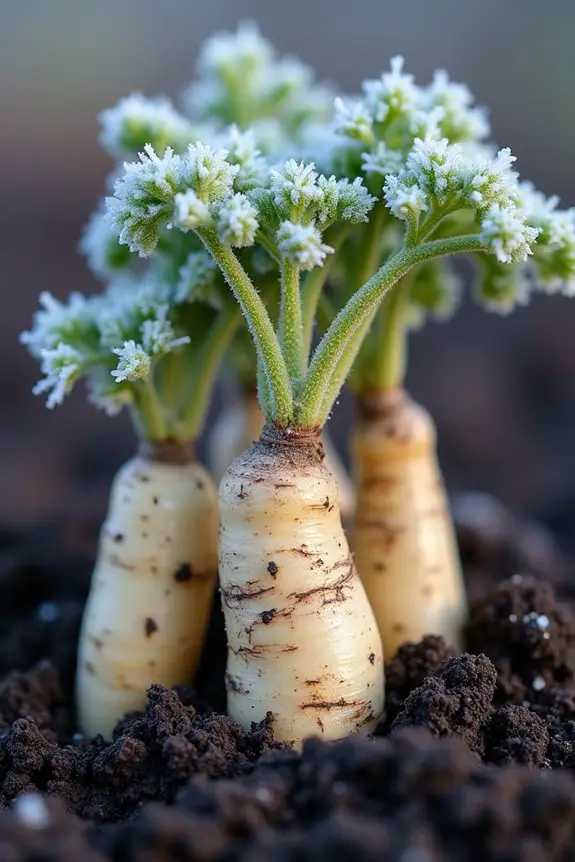
Few vegetables embrace winter’s harsh kiss quite like parsnips, those pale ivory treasures that transform bitter cold into concentrated sweetness.
These cream-colored roots develop enchanting flavors when frost converts their starches into natural sugars.
Popular parsnip varieties include:
- Hollow Crown – classic heirloom with broad shoulders and sweet flesh
- Gladiator – smooth, uniform roots perfect for roasting
- Javelin – slender variety ideal for smaller gardens
- White Gem – baby parsnips ready in just 85 days
Winter harvests reward patient gardeners with nutty, honeyed vegetables.
Creative parsnip recipes showcase their versatility: creamy soups, golden purees, caramelized chips, or hearty gratins that warm cold evenings perfectly.
Cabbage
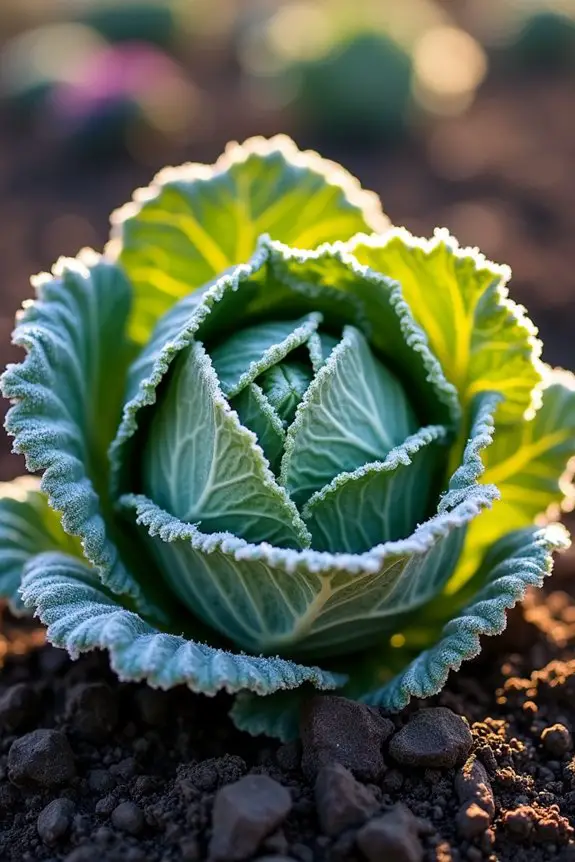
Sturdy cabbage heads stand as triumphant crowns in the fall garden, their tightly wrapped leaves promising months of crisp, satisfying harvests.
Cold temperatures transform these emerald orbs into sweet, tender treasures that melt beautifully in warming soups and stews.
Different cabbage varieties offer distinct flavors and textures, from smooth green heads to crinkled savoy types with their decorative purple-veined leaves.
Creative cabbage recipes showcase this versatile vegetable’s ability to shine in everything from classic coleslaw to hearty braised dishes.
Each frost-kissed head delivers exceptional nutrition and incredible flavor that makes winter cooking deeply satisfying.
Collard Greens
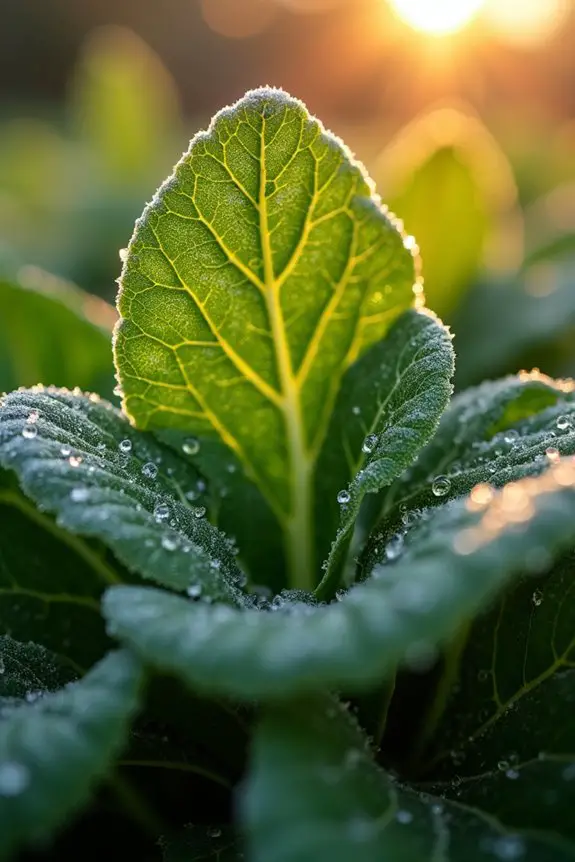
When autumn’s crisp air settles over the garden, collard greens unfurl their broad, blue-green leaves like magnificent fans reaching toward the sky.
These hardy champions thrive in cool weather, developing sweeter flavors after frost kisses their sturdy stems.
Collard greens benefits include exceptional nutrition packed into every emerald leaf.
Their robust texture makes cooking collard greens wonderfully versatile:
- Braising transforms tough leaves into silky ribbons
- Sautéing creates quick, tender side dishes
- Steaming preserves bright color and nutrients
- Raw preparation adds crunch to salads
These dependable vegetables reward patient gardeners with months of fresh, flavorful harvests.
Growing collard greens provides excellent physical exercise opportunities through activities like digging, planting, and harvesting throughout the season.
Leeks
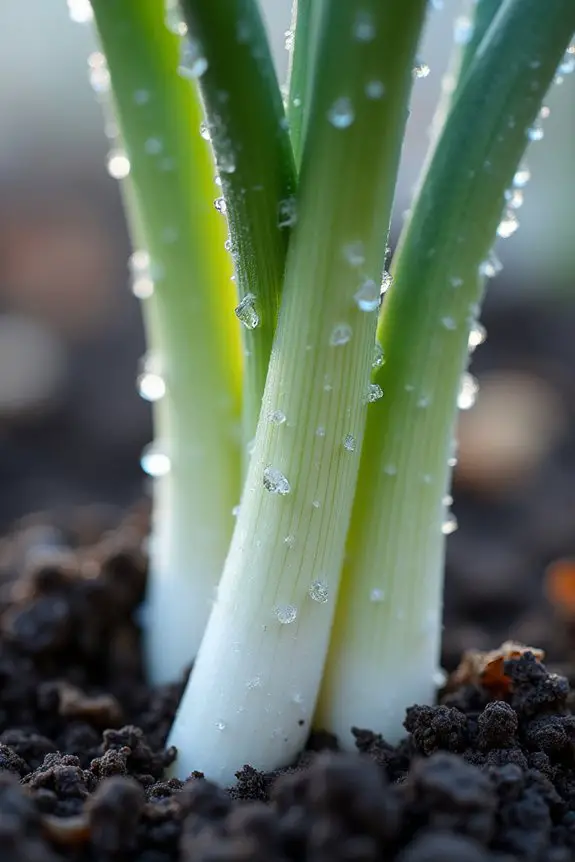
While collard greens spread their leaves wide across garden beds, leeks stand like elegant soldiers in perfectly straight rows, their pale green stalks crowned with dark emerald tops that flutter in autumn breezes.
These graceful vegetables transform completely after frost kisses their tender shoots, developing sweet, mellow flavors that make hearts sing.
Popular leek varieties like King Richard and American Flag become incredibly tender, their harsh bite melting into buttery smoothness.
Winter leek recipes showcase this transformation beautifully, from creamy potato leek soups to golden gratins that warm kitchens with their heavenly aromas and comfort.
Turnips
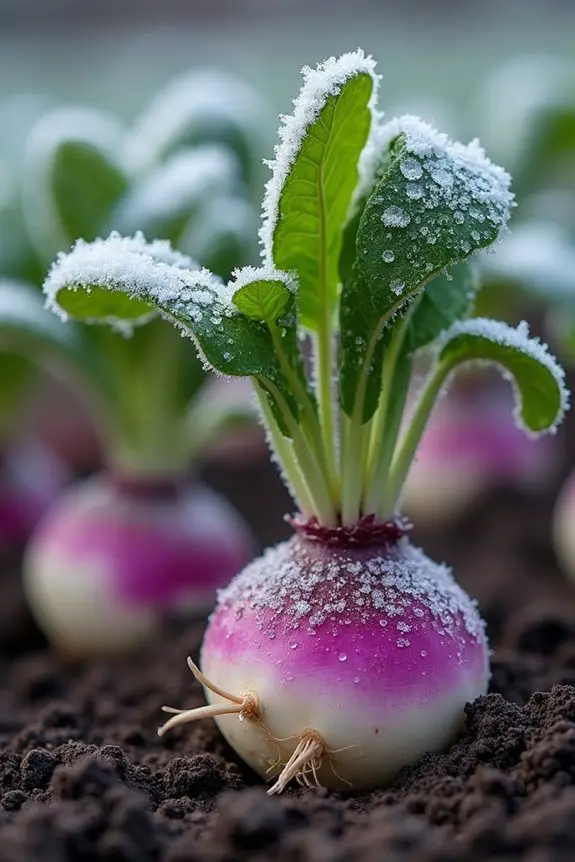
Beneath autumn’s golden canopy, turnips nestle like hidden treasures in rich, dark soil, their purple-crowned shoulders peeking through earth like precious gems waiting for revelation.
These humble root vegetables transform into sweet, tender delights once frost kisses their leafy tops, creating perfect ingredients for warming meals.
Essential turnip varieties and uses:
- Purple Top White Globe – Classic choice with mild, sweet flesh perfect for roasting
- Hakurei – Japanese variety offering crisp texture ideal for fresh salads
- Golden Ball – Yellow-fleshed heirloom bringing buttery richness to turnip recipes
- Scarlet Queen – Vibrant red roots adding colorful beauty to autumn harvest dishes
Spinach
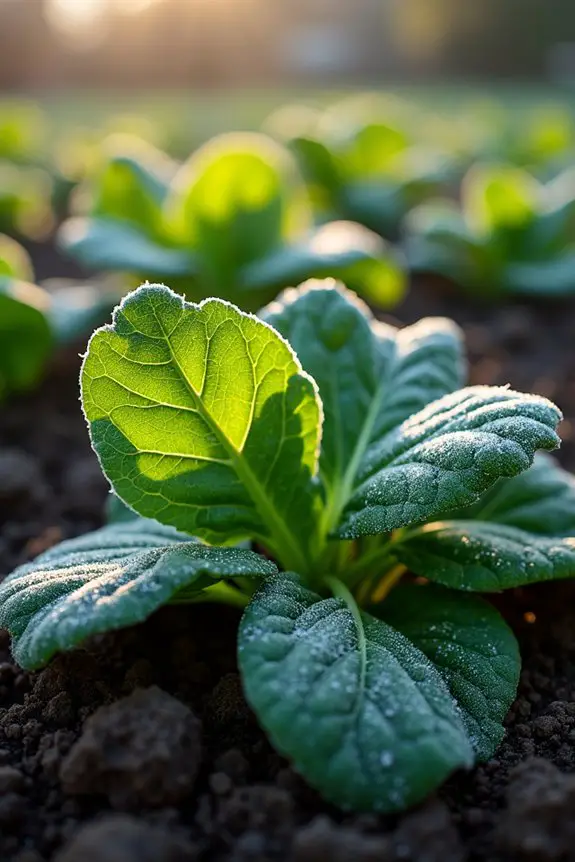
Emerald leaves unfurl like silk ribbons across cool autumn soil, as spinach transforms gardens into verdant carpets of nutritious abundance.
Frost kisses each tender leaf, converting starches into natural sugars that create an irresistibly sweet, buttery flavor. This enchanting transformation elevates simple spinach recipes into gourmet experiences, whether sautéed with garlic or folded into warm salads.
The impressive spinach nutrition profile delivers iron, vitamins, and antioxidants that nourish both body and soul.
Gardeners realize that patience rewards them with leaves so tender they melt on the tongue, proving that nature’s sweetest gifts arrive after winter’s gentle touch.
Winter Radishes
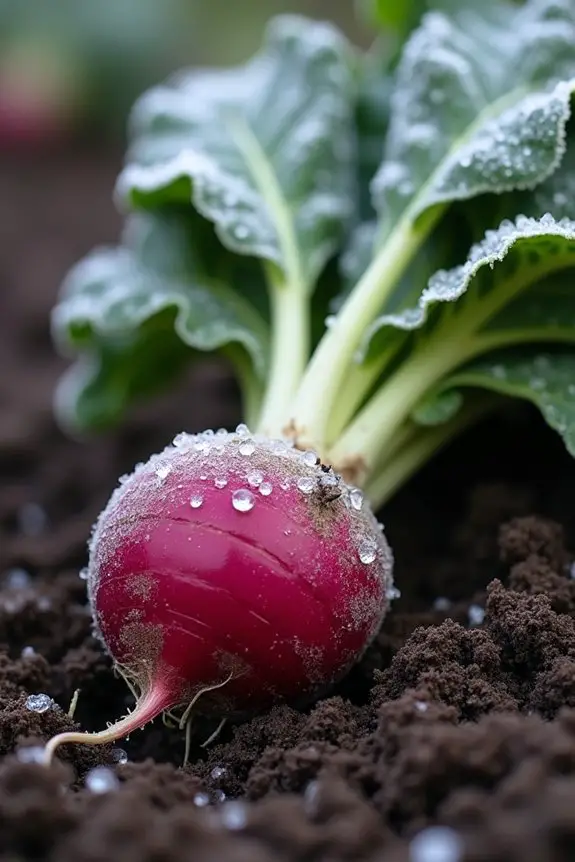
Dozens of crimson globes nestle deep in rich earth, their shoulders peeking through soil like precious gems waiting to be revealed.
Winter radish varieties transform dramatically after frost kisses their leafy tops, developing sweet, crisp flesh that melts beautifully on the tongue.
These hardy champions offer incredible rewards:
- Daikon radishes grow massive, reaching twelve inches long with snow-white interiors.
- Black Spanish radishes develop intense, peppery heat balanced by natural sweetness.
- Watermelon radishes disclose stunning pink centers surrounded by pale green rings.
- China Rose radishes display vibrant magenta skin with tender white flesh.
Their radish health benefits include vitamin C and natural detoxifying compounds.
Rutabaga
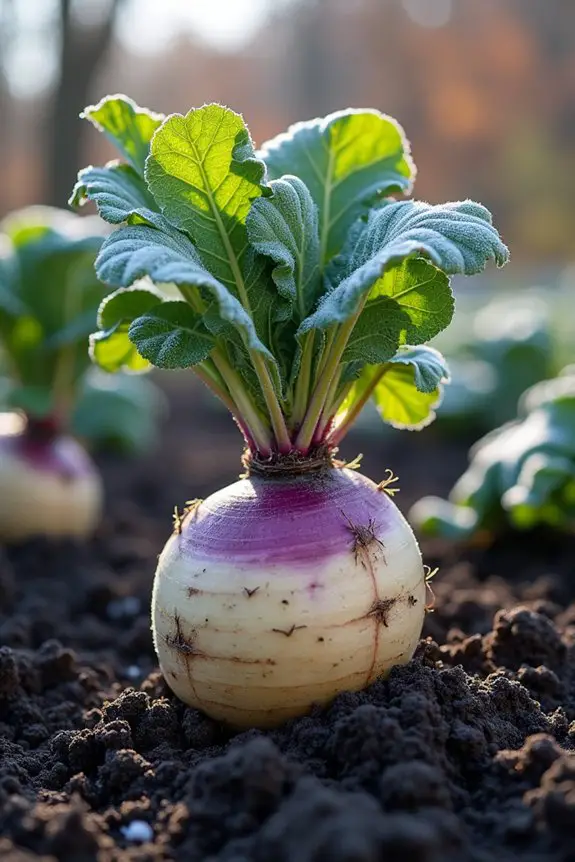
Golden orbs of rutabaga rest quietly in autumn soil, their purple-crowned shoulders promising treasure beneath the surface.
These hardy champions transform dramatically after frost kisses their leaves, developing sweet, nutty flavors that dance on the tongue. Rutabaga health benefits shine through generous vitamin C content and fiber that nourishes the body.
Creative rutabaga recipes reveal endless possibilities, from creamy mashes to golden roasted wedges that caramelize beautifully.
Patient gardeners find that cold weather works wonders on these underground gems, converting starches into natural sugars that create unforgettable meals filled with autumn’s most satisfying flavors.
Popular Questions
How Many Degrees of Frost Do Vegetables Need to Improve Flavor?
Frost impact on vegetables typically occurs at temperatures below 32°F (0°C). Light frosts between 28-32°F provide optimal flavor enhancement by converting starches to sugars, while hard frosts below 28°F may damage plant tissues.
Can I Simulate Frost Effects by Refrigerate Vegetables at Freezing Temperatures?
Frost simulation through refrigeration cannot replicate natural field conditions effectively. Vegetable sweetening requires gradual temperature drops while plants remain alive and rooted, allowing slow starch-to-sugar conversion that artificial freezing cannot duplicate properly.
What’s the Scientific Reason Frost Makes Vegetables Taste Sweeter?
Frost effects trigger plants to convert starches into sugars as cellular protection against freezing damage. This increased sugar concentration acts as natural antifreeze, lowering the freezing point while simultaneously creating the sweeter taste that gardeners notice.
Do Vegetables Lose Nutritional Value After Being Exposed to Frost?
Frost effects on vegetables generally preserve nutritional retention rather than diminish it. Cold temperatures slow enzymatic breakdown of vitamins and minerals. Many frost-exposed vegetables actually maintain or concentrate their nutritional value through natural preservation processes.
How Long After First Frost Should I Wait Before Harvesting?
Optimal harvesting techniques depend on frost timing and vegetable type. Gardeners typically wait 24-48 hours after the first frost to allow sugars to concentrate. Root vegetables benefit from longer exposure, while leafy greens should be harvested promptly.

